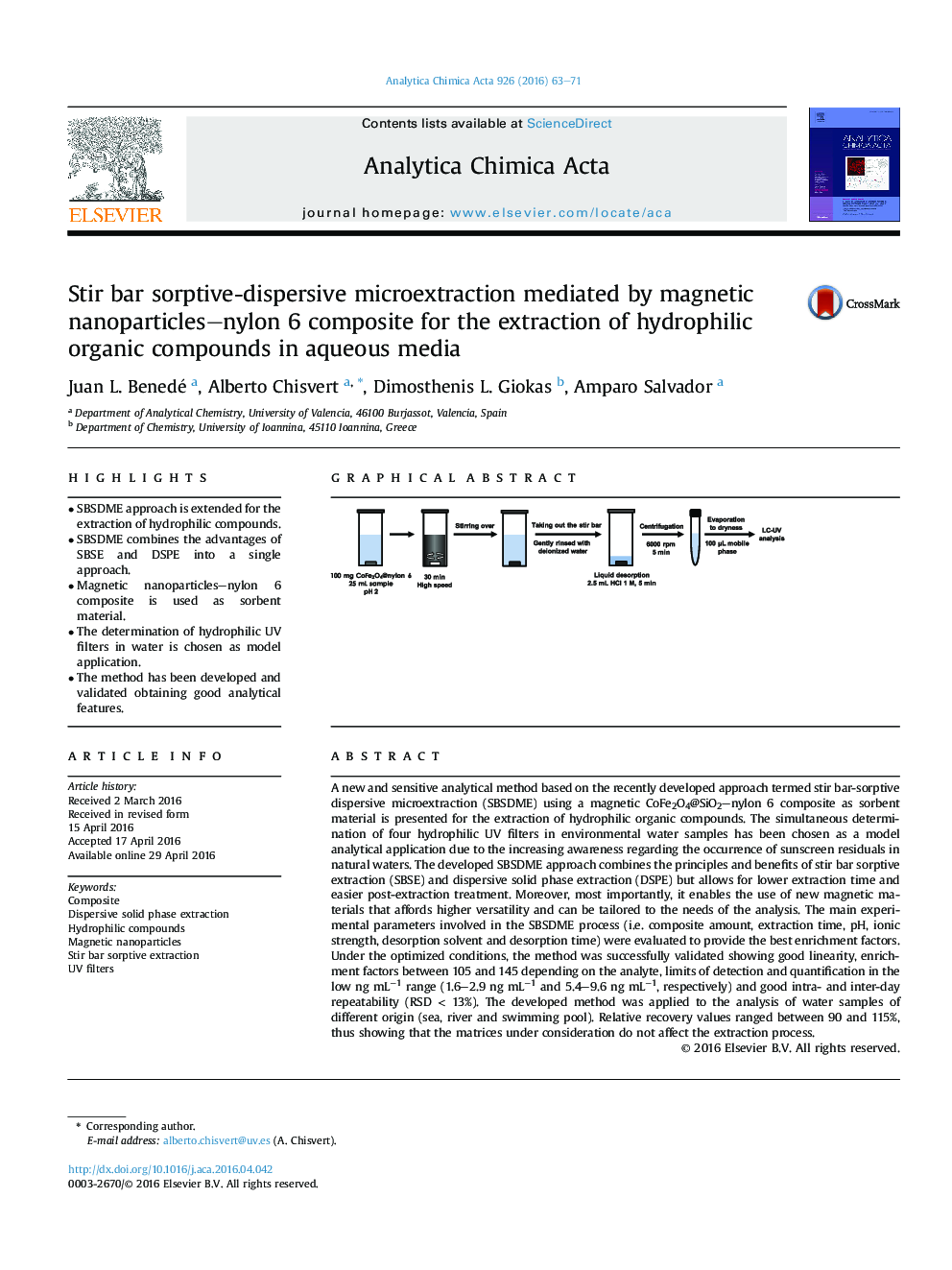| کد مقاله | کد نشریه | سال انتشار | مقاله انگلیسی | نسخه تمام متن |
|---|---|---|---|---|
| 1162890 | 1490906 | 2016 | 9 صفحه PDF | دانلود رایگان |
• SBSDME approach is extended for the extraction of hydrophilic compounds.
• SBSDME combines the advantages of SBSE and DSPE into a single approach.
• Magnetic nanoparticles–nylon 6 composite is used as sorbent material.
• The determination of hydrophilic UV filters in water is chosen as model application.
• The method has been developed and validated obtaining good analytical features.
A new and sensitive analytical method based on the recently developed approach termed stir bar-sorptive dispersive microextraction (SBSDME) using a magnetic CoFe2O4@SiO2–nylon 6 composite as sorbent material is presented for the extraction of hydrophilic organic compounds. The simultaneous determination of four hydrophilic UV filters in environmental water samples has been chosen as a model analytical application due to the increasing awareness regarding the occurrence of sunscreen residuals in natural waters. The developed SBSDME approach combines the principles and benefits of stir bar sorptive extraction (SBSE) and dispersive solid phase extraction (DSPE) but allows for lower extraction time and easier post-extraction treatment. Moreover, most importantly, it enables the use of new magnetic materials that affords higher versatility and can be tailored to the needs of the analysis. The main experimental parameters involved in the SBSDME process (i.e. composite amount, extraction time, pH, ionic strength, desorption solvent and desorption time) were evaluated to provide the best enrichment factors. Under the optimized conditions, the method was successfully validated showing good linearity, enrichment factors between 105 and 145 depending on the analyte, limits of detection and quantification in the low ng mL−1 range (1.6–2.9 ng mL−1 and 5.4–9.6 ng mL−1, respectively) and good intra- and inter-day repeatability (RSD < 13%). The developed method was applied to the analysis of water samples of different origin (sea, river and swimming pool). Relative recovery values ranged between 90 and 115%, thus showing that the matrices under consideration do not affect the extraction process.
Figure optionsDownload as PowerPoint slide
Journal: Analytica Chimica Acta - Volume 926, 5 July 2016, Pages 63–71
